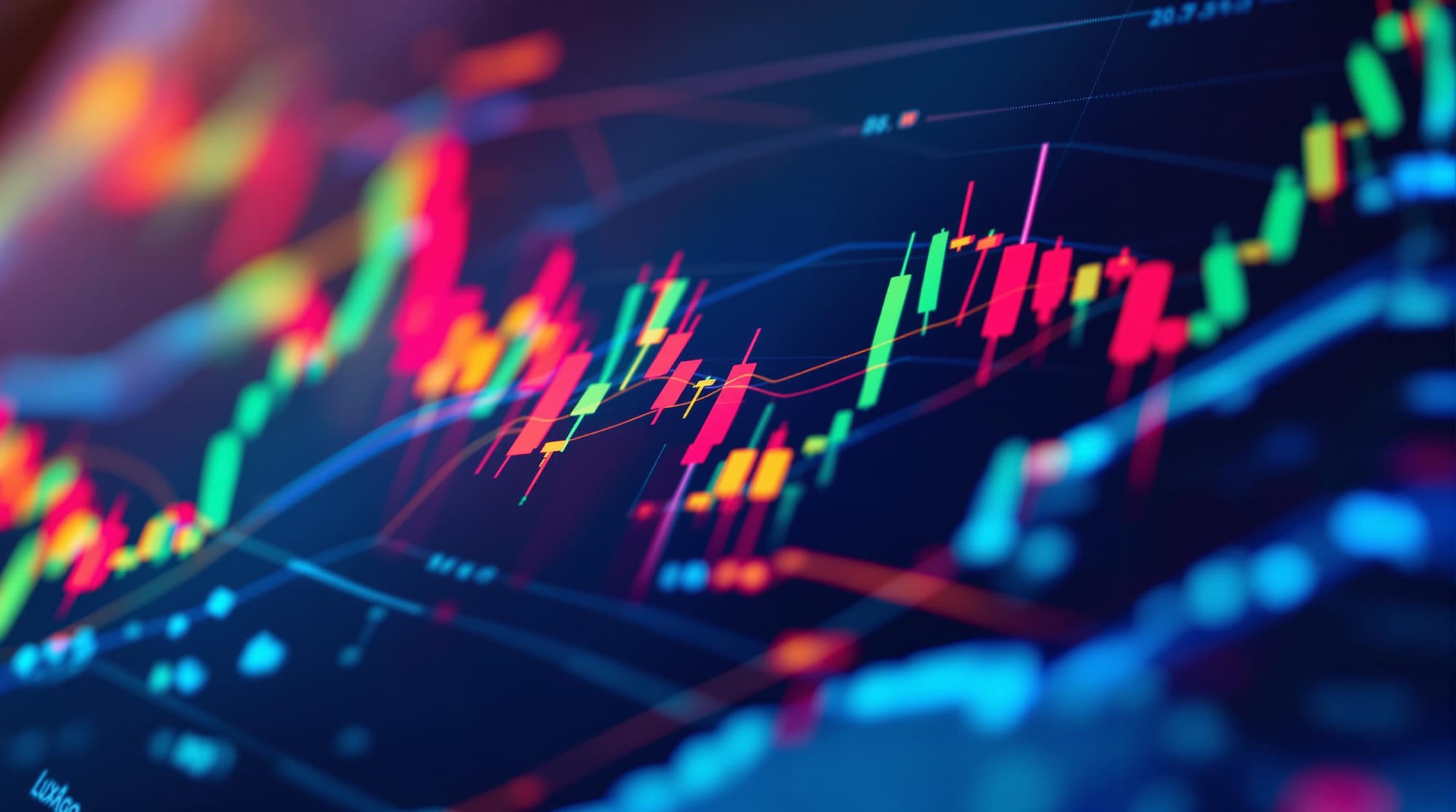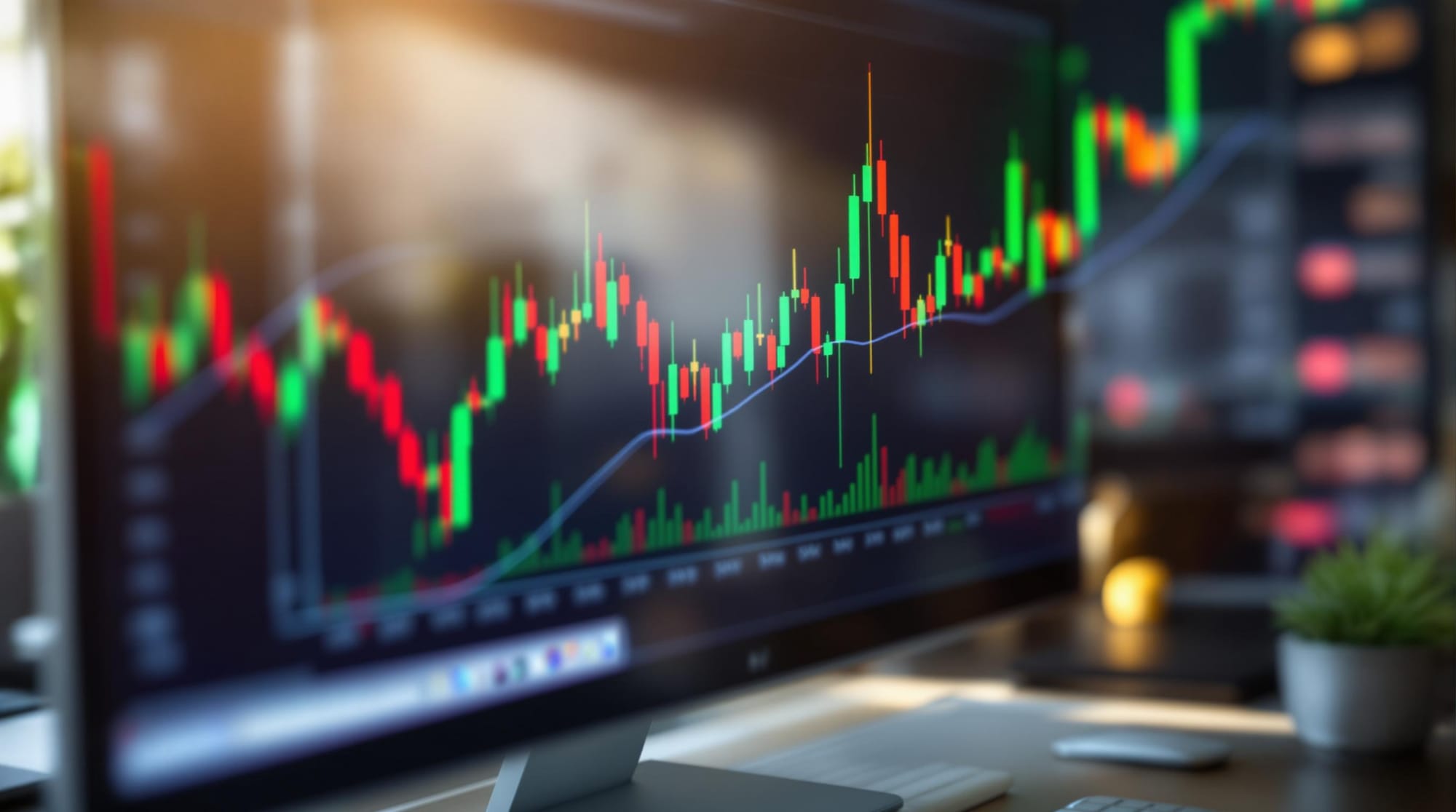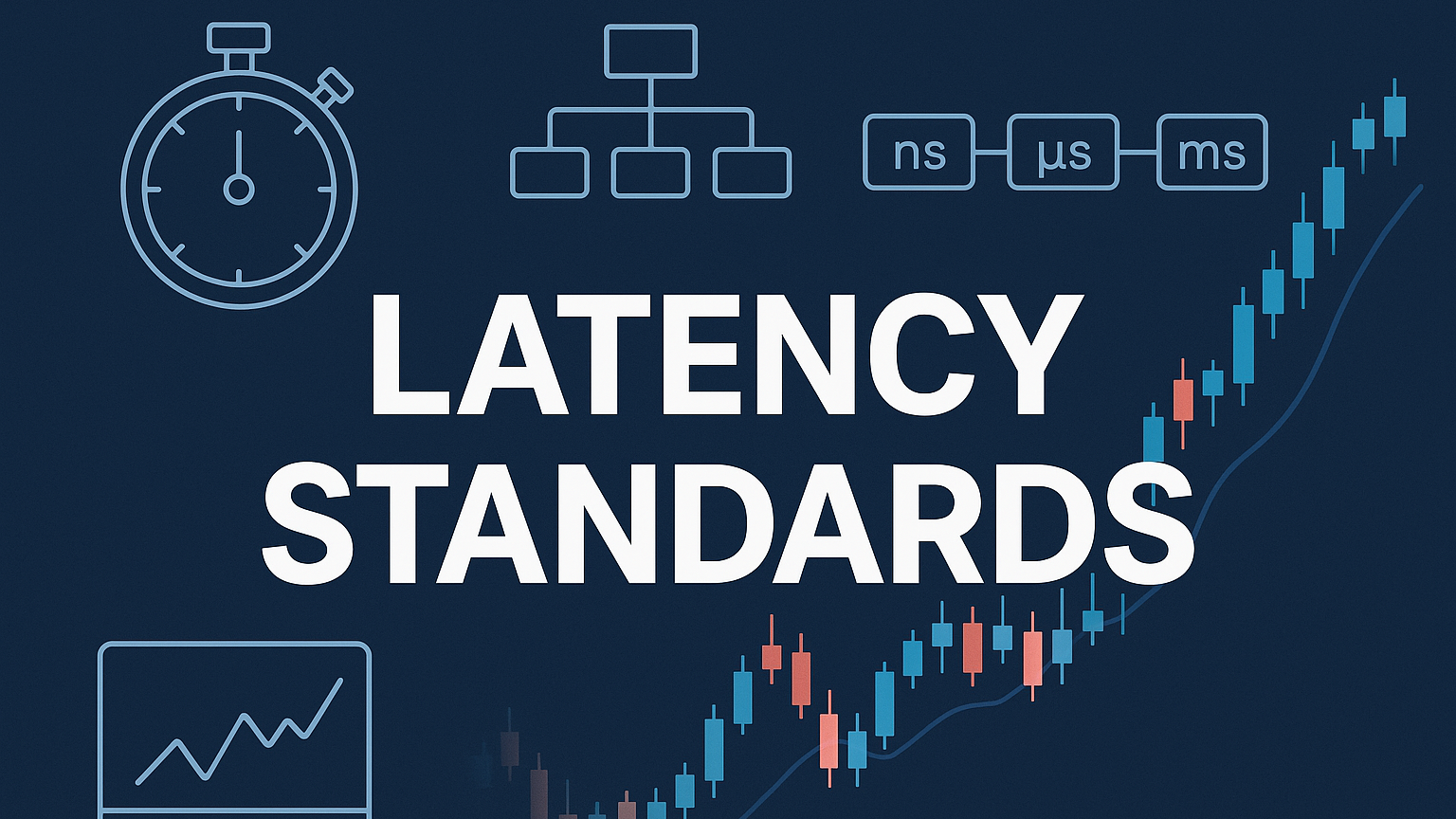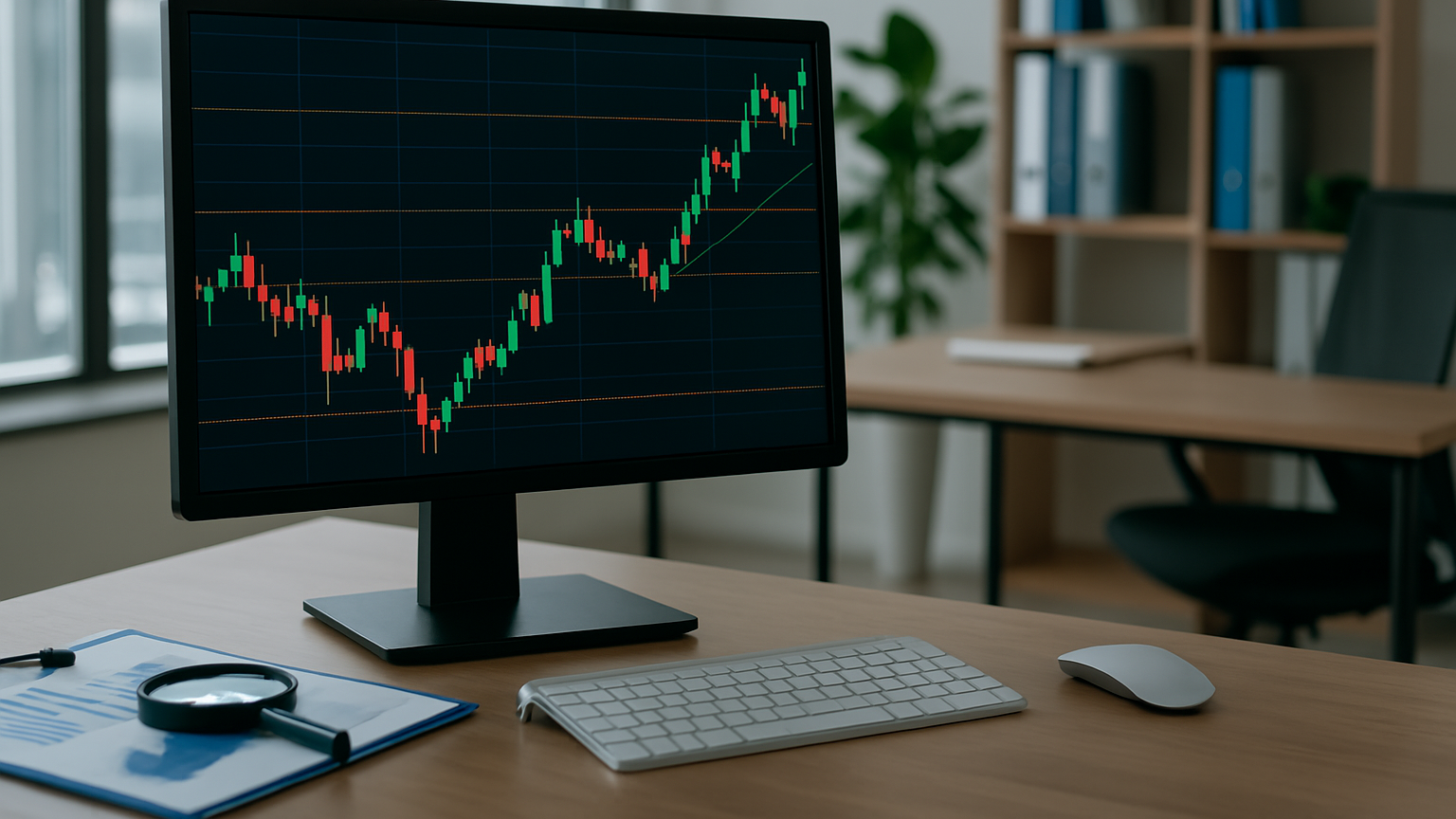Explore the fundamentals of time series analysis in algorithmic trading, covering key methods, applications, and validation techniques for effective strategies.
Time series analysis is a critical tool in algorithmic trading, helping traders analyze past market trends to make data-driven decisions. Here's a quick summary of its core concepts and applications:
-
Key Elements:
- Stationarity: Ensures consistent data for accurate predictions.
- Autocorrelation: Identifies relationships between past and current values.
- Seasonal Patterns: Detects recurring market behaviors.
-
Popular Methods:
- Moving Averages: Smooths data to reveal trends (e.g., SMA, EMA).
- ARIMA Models: Handles non-stationary data for precise forecasts.
- GARCH Models: Predicts volatility during market turbulence.
- RNN/LSTM: Captures long-term dependencies in complex data.
- Kalman Filters: Real-time updates for high-frequency trading.
-
Practical Applications:
- Predicting price changes and volatility trends.
- Identifying support/resistance levels.
- Enhancing risk management with historical data.
-
Testing & Validation:
- Backtesting strategies to ensure real-world reliability.
- Time series cross-validation (e.g., walk-forward validation) to avoid overfitting.
Build ARCH and GARCH Models in Time Series using Python
Core Time Series Methods
Let’s dive into some key time series methods that traders use to forecast market movements. These techniques each offer distinct advantages for analyzing price trends and making informed decisions.
Moving Average Analysis
Moving averages help smooth out price data, making trends easier to spot. However, their performance depends on the market conditions and the chosen timeframe.
Here are three common types of moving averages:
| Type | Description | Best Use |
|---|---|---|
| Simple (SMA) | Gives equal weight to all prices | Works well in stable, trending markets |
| Exponential (EMA) | Puts more emphasis on recent prices | Ideal for volatile markets |
| Weighted (WMA) | Allows custom weight distribution | Useful for specific trading needs |
"The 10-day exponential moving average (EMA) is my favorite indicator to determine the major trend. I call this 'red light, green light' because it is imperative in trading to remain on the correct side of a moving average to give yourself the best probability of success. When you are trading above the 10-day, you have the green light, the market is in positive mode and you should be thinking buy. Conversely, trading below the average is a red light. The market is in a negative mode and you should be thinking sell." – Marty Schwartz
For practical use, combine different timeframes:
- Short-term (10–20 periods): Quick signals for entry or exit points.
- Medium-term (50–100 periods): Confirms trends and reduces noise.
- Long-term (200–250 periods): Identifies major market trends.
Let’s move on to AR and MA models to broaden our understanding.
AR and MA Model Applications
AR (AutoRegressive) models focus on price momentum, while MA (Moving Average) models help filter out market noise. Both methods work best in markets with clear trends.
For more complex forecasting, ARIMA models take it a step further by handling non-stationary data.
ARIMA Model Implementation
ARIMA models are particularly effective for non-stationary datasets, thanks to their differencing technique. For example, an ARIMA model with parameters p = 1, d = 1, and q = 2 achieved 97.5% accuracy in forecasting ARCH CAPITAL GROUP stock prices over 15 observations.
Here’s how to implement ARIMA effectively:
- Test for stationarity: Use tools like the Augmented Dickey-Fuller test.
- Select parameters (p, d, q): Analyze ACF and PACF plots for guidance.
- Validate performance: Use metrics like MAPE and RMSE to ensure accuracy.
While ARIMA performs well with structured data, deep learning models like RNNs and LSTMs often excel with larger, more complex datasets.
Advanced Forecasting Techniques
When it comes to time series forecasting in algorithmic trading, methods like GARCH models, RNN/LSTM networks, and Kalman filters play a critical role in refining predictions.
GARCH Volatility Models
GARCH models are designed to predict market volatility by analyzing past variances and errors. They are especially effective during periods of market turbulence, where volatility clustering is more apparent.
| Type | Best Use Case | Key Advantage |
|---|---|---|
| Standard GARCH | General volatility forecasting | Captures patterns in volatility |
| EGARCH | Asymmetric volatility response | Handles market shocks effectively |
| TGARCH | Leverage effects modeling | Accounts for positive/negative return differences |
Research by Adam Hassouni in July 2024 highlighted that combining ARIMA with GARCH to trade the S&P 500 yielded much better results than a traditional buy-and-hold strategy. This approach shined during challenging periods like the 1970–1980 market and the COVID-19 crisis.
These models set the stage for neural network techniques, which can enhance predictive accuracy even further.
RNN and LSTM Applications
LSTM networks, an advancement over traditional RNNs, excel at capturing long-term dependencies in financial data, making them ideal for analyzing complex market behaviors.
For example, an LSTM model achieved an 83.33% directional accuracy when forecasting EUR/USD, with a mean absolute error of 0.0012. However, performance dropped over time, from 98% accuracy at t+1 to 64.117% at t+21.
While neural networks handle intricate patterns well, filter-based methods bring a dynamic edge to real-time forecasting.
Kalman Filter Methods
Kalman filters excel in real-time market prediction by continuously updating as new data comes in. They are particularly effective at filtering out noise while staying responsive to actual market trends.
In a trading strategy applied to Apple Inc. (AAPL), the Kalman filter delivered the following results:
- Long Entry Threshold: -3
- Short Entry Threshold: 3
- Stop-Loss Threshold: 0.02
- Sharpe Ratio: 0.64
- Maximum Drawdown: 18.02%
To use Kalman filters effectively, traders need to define clear entry and exit thresholds, apply strict stop-losses, and regularly adjust parameters. Their ability to quickly adapt to market changes makes them particularly useful in high-frequency trading, where speed and precision are essential.
Testing Time Series Models
Before deploying forecasting models in real-world scenarios, thorough testing is essential to ensure their predictions hold up under live market conditions. Once you've developed and fine-tuned your models, validating their reliability becomes a crucial step.
Strategy Backtesting Steps
Here’s a breakdown of the key steps involved in backtesting:
| Phase | Actions | Metrics |
|---|---|---|
| Data Preparation | Clean historical data and adjust for corporate actions | Complete historical data |
| Parameter Setup | Define entry/exit rules and position sizing | Strong risk-adjusted returns |
| Execution Testing | Run the strategy across varying market conditions | Consistent win rate, solid Sharpe ratio |
| Results Analysis | Calculate performance metrics and analyze drawdowns | Controlled drawdowns |
Research shows that reducing the number of parameters and using larger datasets can help minimize optimization bias. Once backtesting is solid, cross-validation adds an extra layer of protection against overfitting.
Time Series Cross-Validation
Time series cross-validation (TSCV) evaluates models using out-of-sample data, making it a powerful tool to avoid overfitting. One effective method is walk-forward validation, where the model is trained on a rolling window of data and tested on the next set of observations. This approach offers a more realistic performance evaluation compared to a fixed train/test split.
For instance, when analyzing Google Inc.'s NASDAQ closing prices from 2015, forecasts for 1- to 8-step-ahead predictions showed increasing errors (RMSE: 11.27, MAE: 7.26). Techniques like these lay the groundwork for integrating advanced backtesting tools.
Backtesting Tools Overview
LuxAlgo provides hundreds of free trading indicators along with exclusive tools and an AI Backtesting platform directly on TradingView, offering powerful features for multi-timeframe testing, advanced parameter optimization, and walk-forward analysis. TradingView, in turn, is a favorite among over 100 million traders, boasting a 4.9 rating from 1.5 million mobile reviews.
To get the most out of your testing, combine different methods. Start with walk-forward validation during development, then verify results with out-of-sample testing on recent market data. This approach ensures your model performs consistently across various market conditions while avoiding pitfalls like look-ahead bias or over-optimization.
Trading Strategy Examples
Here are some practical strategies that use time series techniques to navigate markets effectively. Each one emphasizes careful planning and execution.
Moving Average Trading
The Golden Cross strategy is a popular approach. It signals a strong buying opportunity when the 50-day moving average crosses above the 200-day moving average.
Here’s how different setups work across trading styles:
| Time Frame | Moving Average Setup | Signal Type |
|---|---|---|
| Intraday | 10-EMA + 50-EMA | Quick reversals |
| Swing | 20-EMA + 100-SMA | Medium-term trends |
| Position | 50-SMA + 200-SMA | Long-term signals |
In forex trading, a typical method uses a 10-period EMA alongside a 50-period EMA. When the shorter EMA moves above the longer one, it can indicate a buying opportunity. Traders often place stop-loss orders below recent swing lows to manage risk. This setup provides clear entry and exit points while maintaining a focus on risk control.
Next, let’s look at how volatility-based strategies refine risk management during fluctuating market conditions.
GARCH Trading Strategies
A combined approach using GARCH and ARIMA models helps capture both price trends and volatility patterns. This method adjusts position sizes, optimizes trade timing during volatile periods, and sets flexible risk thresholds.
Building on these insights, high-frequency trading (HFT) takes time series techniques to another level.
Time Series in HFT
High-frequency trading strategies focus on speed and precision to seize short-lived market opportunities. Research on Dow Jones 30 stocks found that a Sampling+Ensemble strategy improved prediction accuracy, increasing the F1 score by as much as 0.23.
HFT systems use various time series methods to refine their performance:
| Component | Application | Impact |
|---|---|---|
| Deep Learning | Pattern Recognition | Real-time signal generation |
| Data Processing | Noise Filtering | Improved accuracy |
| Ensemble Methods | Multiple Models | Fewer false signals |
"The effectiveness of deep learning in HFT is rooted in its ability to handle large volumes of data, adapt to non-linear relationships, and uncover latent features that traditional models may overlook".
Additionally, the research highlighted that recovering previously discarded data during the thinning process improved predictions for 27 out of 30 stocks.
Conclusion
Summary and Tips
Time series analysis plays a major role in U.S. stock exchange trading, accounting for 60–75% of activity. Success in this area hinges on blending analytical techniques with careful execution.
| Component | Best Practice | Impact |
|---|---|---|
| Data Preparation | Ensure data is complete and clean | Boosts model accuracy |
| Model Selection | Align with data characteristics | Enhances prediction quality |
| Risk Management | Use stop-loss and position sizing | Safeguards capital |
| Strategy Testing | Apply cross-validation and early stopping | Minimizes overfitting risk |
To analyze non-stationary data effectively, techniques like differencing or logarithmic transformations can help reveal meaningful market trends. Below is a practical guide to applying these principles in your trading strategies.
Implementation Guide
-
Data Quality Assurance
Start by thoroughly cleaning your data. Address missing values with methods such as linear interpolation. -
Model Development
Focus on strategies that exploit real market inefficiencies rather than overfitting historical data. This is especially important in growing markets like India, where algorithmic trading accounts for roughly 40% of trading volume. -
Risk Control
- Analyze volatility to monitor positions effectively.
- Set stop-loss levels dynamically, based on historical volatility patterns.
- Adjust your market exposure according to current conditions.







